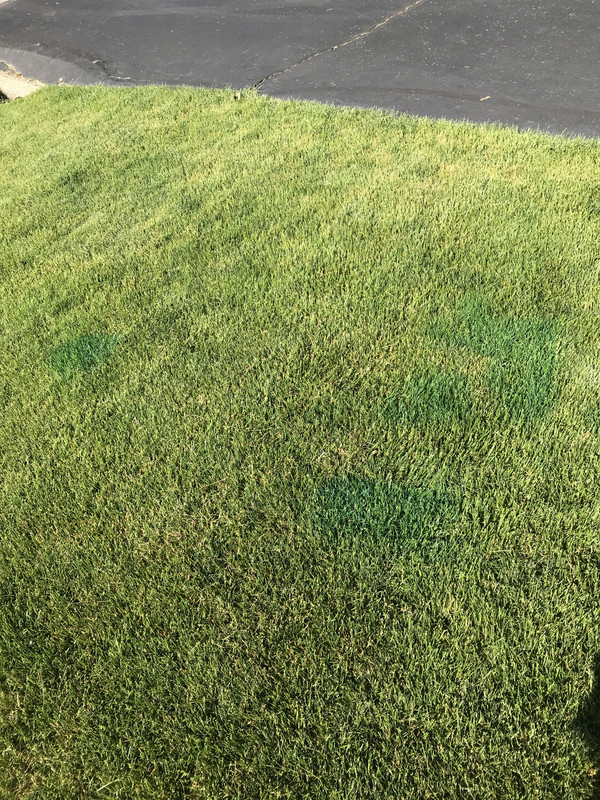That is a lot of Nitrogen, but the last dose was several weeks ago. Typically Nitrogen burn will happen quicker than that and 0.75 lbs/1000 isn't going to cause burn unless overapplied. Even 1.5 lbs/1000 probably won't cause burn unless it is a high salt fertilizer and it is hot and dry. The high Nitrogen will lead to more top growth, though, and make the lawn susceptible to drought stress and disease. Slopes will also dry out quicker than flat areas, and south facing slopes also get more direct sun exposure making them dry even faster.
If the grass is dry and crunchy when walking on and footprints stay visible longer than other areas, but isn't dead, that sounds like drought stress. The picture look like it also. I would give some water and see what happens. If it is dry, but not dead, you will see an immediate improvement in the turf. Water in the early morning so it can dry out and not stay wet in case it is a fungus.
If this is a disease, then you should see signs on the grass blades if it affects the leaves. Typical signs might be brown or black spots on the leaves of healthier plants, browning from the tips and/or thinning and browning in the middle of the blade. You may see Mycelium on the grass that looks like very fine fuzz. Many leaf diseases affect the turf in spots or patches, but some can affect large broad areas of turf. If you have a root disease, then you won't see anything on the leaves, but the roots will sometimes be brown rather than off white. Root diseases can look exactly like drought stress, but they tend to affect small patches rather than large swaths of turf.
First thing I would do is give it some water and inspect the grass closely. A final point would be that red fescue can go dormant in heat. I would think we are a bit early in your area for that, but if it has been hot and dry that could do it.







